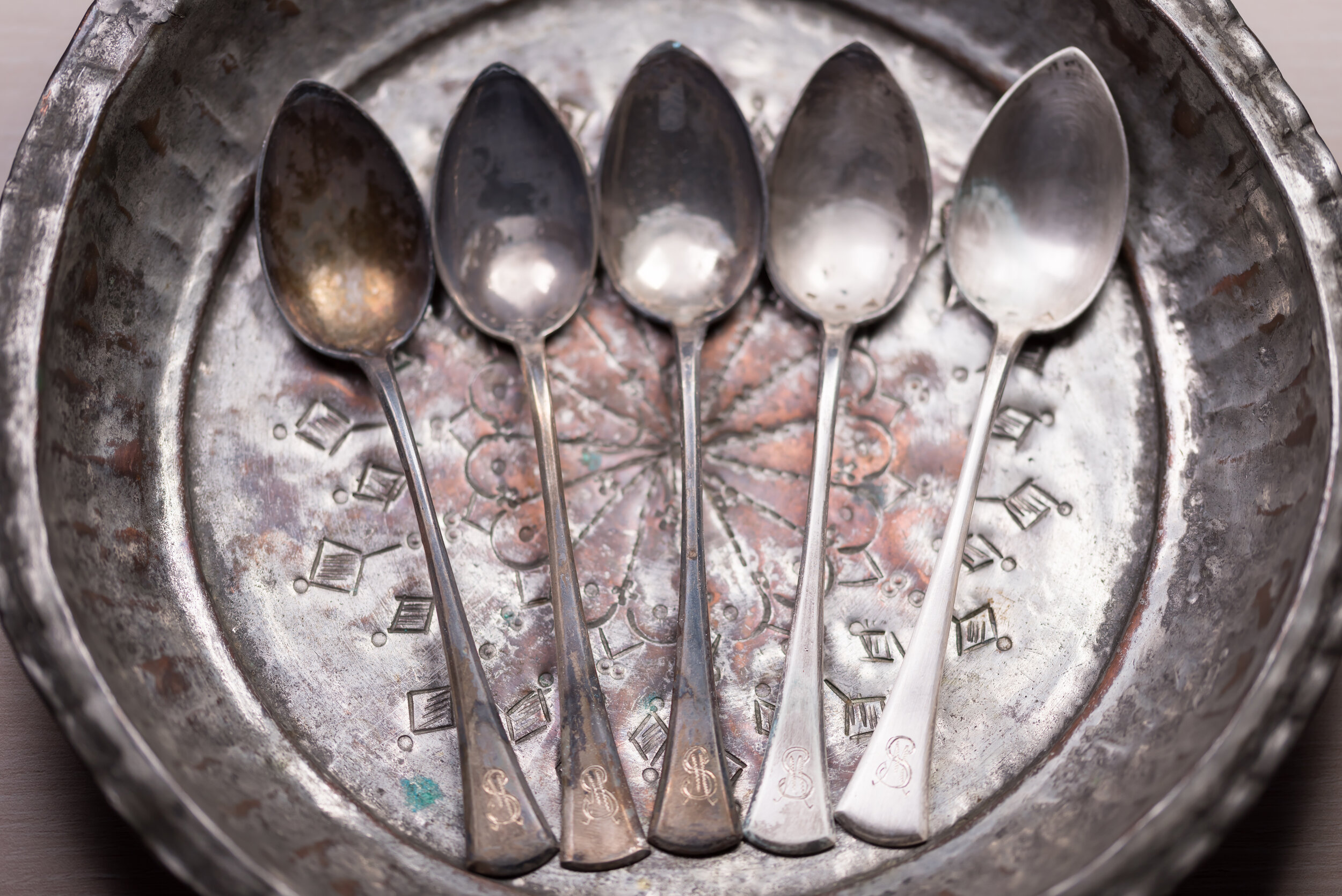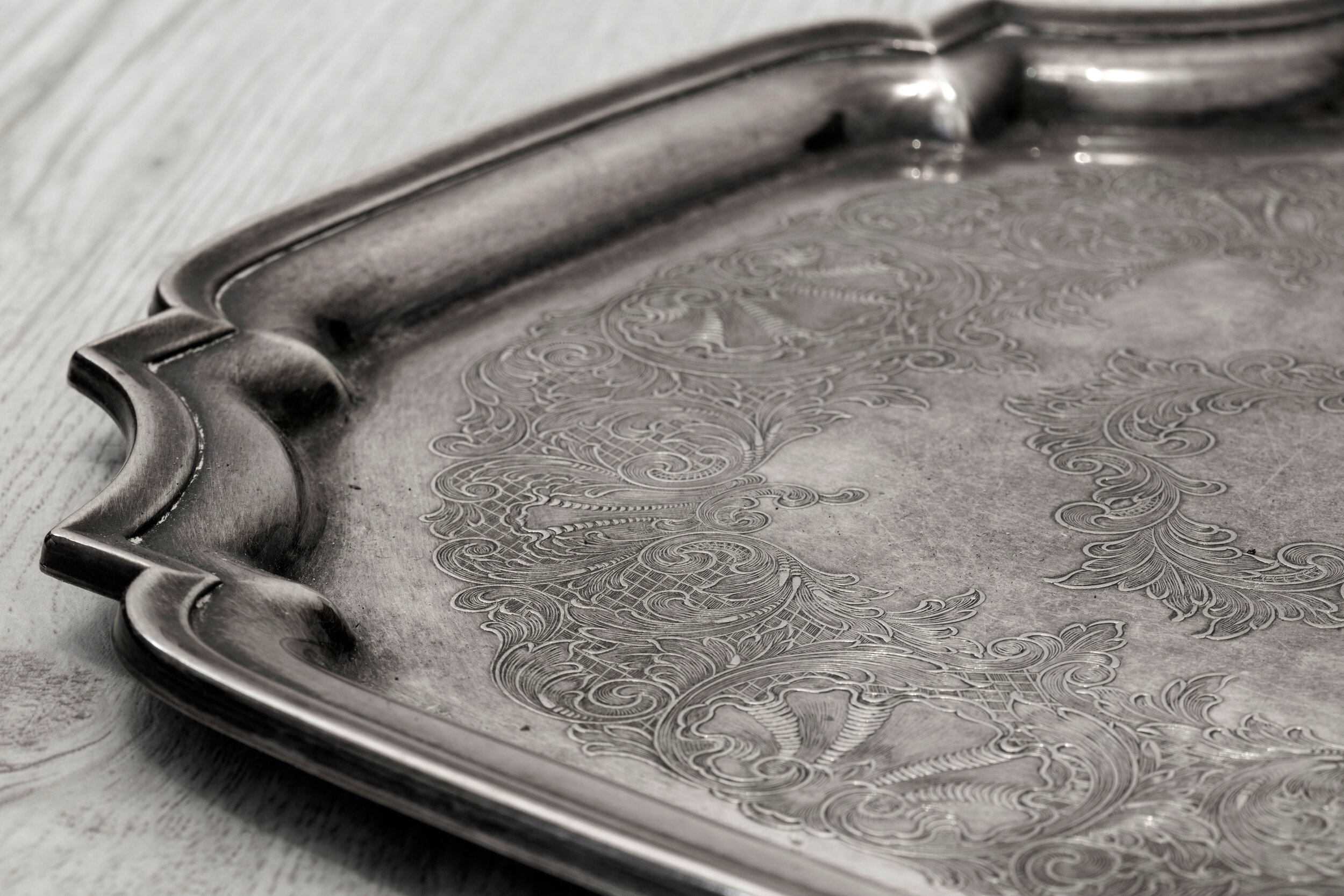The Best Methods for How to Clean Silver
/How to Clean Silver
Disclaimer: As an Amazon Associate I earn from qualifying purchases. There are affiliate links in this post. This means that at no cost to you, I will receive a commission if you purchase through my link. I will only ever promote the products and services that I trust and 100% recommend. You may read my full disclosure policy for more information. Thank you for supporting my business in this way.
Any homeowner with a good set of cutlery — or even a valuable piece of jewelry — has probably wondered how to clean silver in a budget-friendly yet effective way. Thankfully, there are countless methods to choose from, and most of them use ingredients that you most likely already have on hand.
What Causes Silver to Tarnish?
Pure silver, on its own, is tarnish-resistant. But most cutlery, utensils, silverware, and jewelry is not made from pure silver. Instead, they are usually either made from silverplate or solid sterling silver.
RELATED:
Here are the Best Methods for How to Clean Brass
The Best Knife Sets
Silverplate consists of a thin coating of silver overlaid onto a base metal, while solid sterling silver consists of a little over 90% silver, but the remaining portion is a different metal, typically copper. It’s this other metal that forms a tarnish when it is exposed to the air; the tarnish actually forms as a protective layer.
Factors That Increase Tarnish
Lots of different factors can affect how quickly your silver becomes dull and discolored. High humidity in the air will speed up the discoloration process, as will industrial and air pollution.
Exposure to beauty products such as shampoo, hairspray, perfume, certain moisturizers and cleansers, and even deodorant can be harmful for the lifecycle of your silver products. You should also keep most chemicals and detergents, especially chlorine, as far away from your silver as possible.
How to Clean Silver: Top 6 Remedies
Thankfully, even if your silver has already begun to oxidize, there are several easy, at-home remedies to make your silver sparkle again.
A few tips before you dive in:
Spot test. Start by spot testing one small area of your silver to make sure it reacts well to your chosen method.
Space out your cleanings. It might sound counterintuitive to postpone a cleaning. However, most cleaners — even the gentlest ones— have abrasive tendencies. Keep track of the last time you cleaned your silver, and wait a while before you pull out the home remedy again.
Don’t use chlorine. Chlorine will cause your silver to tarnish — not to mention that it has extremely erosive tendencies. If all you have on hand is chlorine, you’re better off not cleaning the silver at all.
Keep it out of the dishwasher. Always wash your silver by hand.
Method #1: Hand Sanitizer
This method is extremely easy and straightforward.
Just squirt a few pumps of sanitizer onto a cloth, then wipe directly on the dirty part of the silver. When you’re done, use a soft microfiber cloth to buff the piece.
Method #2: Dish Soap
This is another technique that is fairly simple. All you need is some liquid dish soap, water, and a few soft cloths. You’ll want to start by mixing a few squirts of dish soap into a bowl of water. Use a microfiber cloth, if possible, to dip into the mixture and then wipe down the silverware.
Once you’ve gone over all the pieces, dry them with a soft cloth, then finish by buffing them with a cloth that is specifically designed for silver products.
This method is good for pieces that don’t have severe damage, such as silverware that is starting to look slightly dull.
Method #3: Aluminum Foil and Baking Soda
Start by boiling about 4 cups of water. Once the water is at a boil, take it off the heat and stir in 4 tablespoons of baking soda.
Meanwhile, line a separate bowl with aluminum foil. Pour the hot water and baking soda mixture into the aluminum-lined boil, and use tongs to drop the silver pieces into the water. Make sure the silverware (or jewelry) is in contact with the aluminum foil. This is very important because the aluminum acts as a reducing agent that will remove the outer coat of tarnish from the silver piece. Leave it in for up to 10 minutes, then remove and wipe dry with a microfiber cloth.
This method is ideal for pieces that have a medium amount of damage, such as slight rust or visible oxidation.
Method #4: Baking Soda Paste
This is a twist on the above method. It’s best for pieces that have heavy discoloration and visible build up, or large pieces that won’t fit into a pot of water.
To make the paste, use baking soda (the amount will vary based on the size or number of items), then add water slowly until the mixture has a thick but not drippy consistency. Use a cloth to apply the paste to the silver. Let the mixture sit on the silver for a bit, then use water to rinse it off. Dry the silver with another soft cloth and buff it.
Method #5: Laundry Detergent
Follow the same procedure as above, but swap out the baking soda for a tablespoon of powdered laundry detergent. Do not use any product that contains bleach. After you’ve scrubbed the pieces completely, air dry them on a paper towel or a soft cloth.
Method #6: Corn Starch
Our sixth and final method is to form a thick paste by mixing 3 parts of water with 1 part cornstarch. Take a moist cloth or sponge and dip it in the paste, then spread it on the silver piece. Once the paste has completely dried, take a regular cloth and wipe it off.
Take Care Of Your Silver
Now that your silver pieces are bright and shiny again, don’t just wrap them in newspaper and throw them in the back of a drawer. It is important to keep silver in a dark, cool, and moisture-free place. However, using or wearing your silver on a regular basis will actually keep it from tarnishing by providing friction, which counteracts erosion.
When you store your silver, make sure it’s not exposed to sunlight or in an area that is prone to water damage. Store it separately from your other pieces: for example, if you have silver jewelry, keep it in a different jewelry box than the rest of your pieces.
Now that you know how to clean silver, you can bookmark these handy tips and return to them again and again.
Brandon Hubbard, AIA, NCARB, LEED AP BD+C









